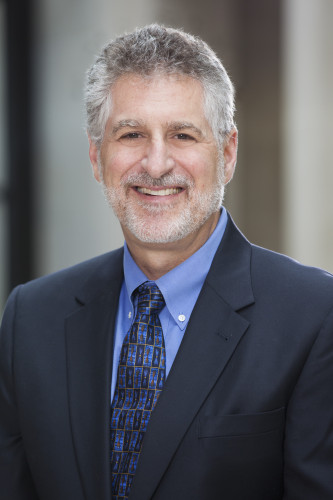 Charles Silver, holder of the Roy W. and Eugenia C. McDonald Endowed Chair in Civil Procedure and the co-director of Texas Law’s Center on Lawyers, Civil Justice and the Media, has co-authored a new op-ed for The New York Post applauding New York Governor Andrew Cuomo’s recent decision allowing pharmacists to give flu shots to children.
Charles Silver, holder of the Roy W. and Eugenia C. McDonald Endowed Chair in Civil Procedure and the co-director of Texas Law’s Center on Lawyers, Civil Justice and the Media, has co-authored a new op-ed for The New York Post applauding New York Governor Andrew Cuomo’s recent decision allowing pharmacists to give flu shots to children.
Silver and frequent collaborator David A. Hyman, a law professor at the Georgetown University Law Center, argue that retailers such as Walmart and CVS should be allowed “to operate medical clinics in their stores… making health care in New York less expensive and more convenient.”
Lowering costs while easing the delivery of quality health care to consumers is a major focus of Prof. Silver’s extensive research and writing. Indeed, Silver and Hyman’s new book, “Overcharged: Why Americans Pay Too Much For Health Care,” will be published by the Cato Institute in April of this year.
We re-print Silver and Hyman’s New York Post essay here:
Cuomo’s smart attack on the flu — and MDs’ monopoly on basic care
Gov. Cuomo has signed an executive order allowing pharmacists to give flu shots to children. The governor’s recent budget proposal also includes a provision that, if approved, will allow Walmart, CVS and other retailers to operate medical clinics in their stores. Both of these initiatives are sensible strategies for making health care in New York less expensive and more convenient.
Why are such steps necessary? There are about 8,000 New Yorkers with the flu as we write this, and almost 1,800 have required hospitalization. Pharmacists were already allowed to give flu shots to adults. If they can be trusted to do that, it makes sense to allow them to deliver flu shots more broadly, particularly when an epidemic is sweeping the state.
What about allowing retailers to operate medical clinics? In 2015, New York had only 18 such clinics, “one of the lowest penetration rates, per capita, nationally,” according to a report produced by the United Hospital Fund. Other states have more retail clinics because they allow them to be staffed by physician assistants and nurse practitioners. New York requires physicians to man the few clinics in the state.
The established medical industry doesn’t want to compete with mid-level professionals for patients, so its leaders try to limit the growth of retail clinics by sowing fears about the quality of care. When asked about Cuomo’s proposal, the president of the Medical Society of the State of New York argued that “the care that is given in these settings . . . is not optimal.”
In reality, patients who visit retail clinics are likely to be treated as well as they are at doctors’ offices, but at much lower cost. The leading study, which appeared in the Annals of Internal Medicine in 2009, found that retail clinics consistently charged less for services that were also delivered at physicians’ offices, urgent-care centers and emergency rooms.
For example, an initial evaluation that averaged $66 at a retail clinic cost $106, $103 and $358 at a physician’s office, urgent-care center and emergency room, respectively. On the quality front, the Annals study found that retail clinics were indistinguishable from doctors’ offices and urgent-care centers — and better than ERs.
The conclusion? “Retail clinics provide less costly treatment . . . with no apparent adverse effect on the quality of care of [the] delivery of preventive care.”
Other studies have yielded similar findings. A 2011 study in the American Journal of Medical Quality found that “the quality of care delivered to [children] by [retail clinics] meets or exceeds that provided in other health care settings.”
A 2013 study in the American Journal of Managed Care found that patients who visited retail clinics generated lower total treatment costs than similar patients who were treated elsewhere. A 2014 study published in the same journal found that, nationwide, CVS’s MinuteClinics outperformed ambulatory-care facilities and emergency rooms when treating earaches, strep throat and urinary-tract infections.
In 2016, researchers again studied the treatment of earaches in children and again found that retail clinics were substantially cheaper than other providers and every bit as good.
The more interesting question isn’t about the merits of Cuomo’s executive order and budget proposal. It’s about whether we should allow doctors to continue to control the delivery of health care. That approach has brought us absurd prices, ever-spiraling spending, surprise bills for out-of-network treatments, long waits for office visits, general unfriendliness to consumers and excessive numbers of health-care-related infections, complications and deaths.
Maybe we should let retailers take a shot at fixing these problems. Across many domains, retailers have figured out how to offer goods and services conveniently and affordably. When people shop at Costco, they know everything they buy will be priced reasonably and that they can return anything they don’t like.
Imagine how much better, more affordable and more pleasant health care would be if doctors’ offices and hospitals were just as devoted to customer service.
